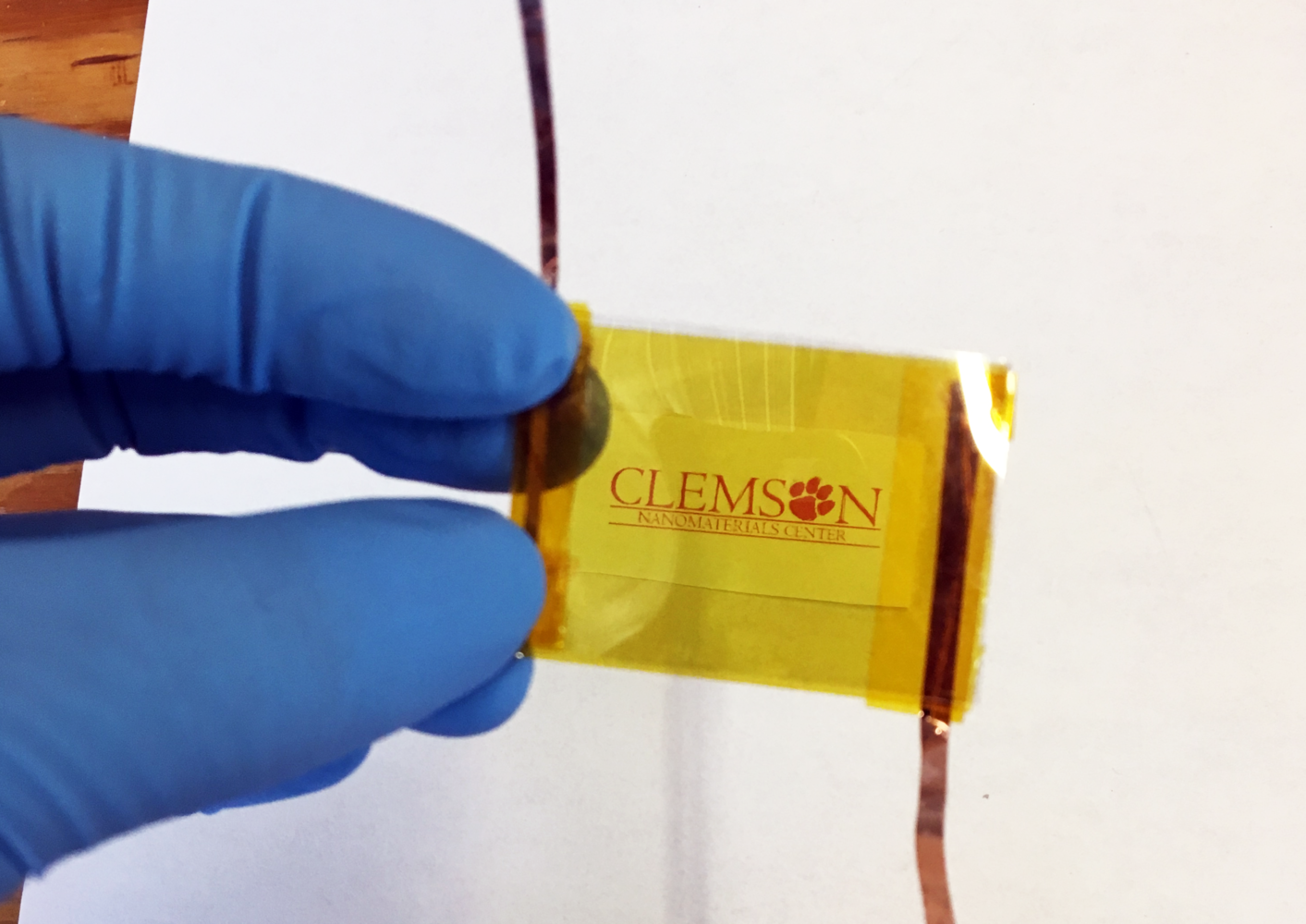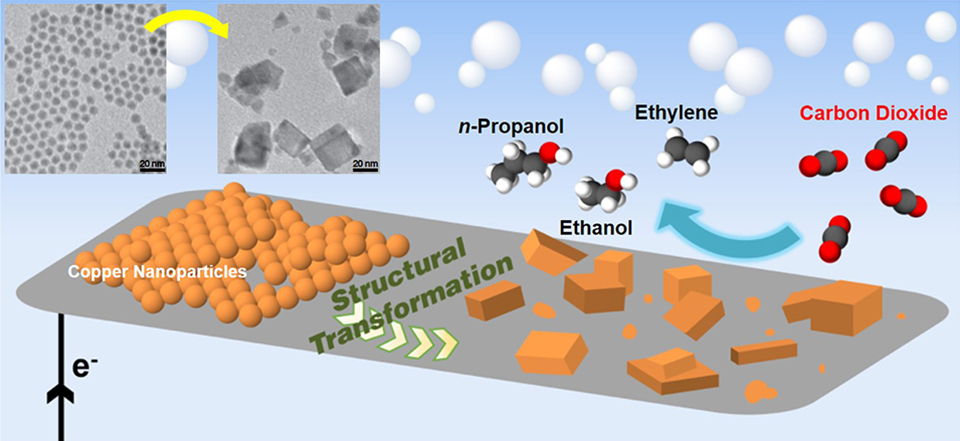In case you missed it (ICYMI), here are some of the stories that made headlines in the world of cleanrooms and nanotechnology in the past week.

The team’s U-TENG is made of plastic from water bottles and tape available at a hardware store. Image: Sai Sunil Mallineni / Clemson University
Physicists at the Clemson Nanomaterials Institute at Clemson University have designed a simple triboelectric nanogenerator, or U-TENG. The device is intended to take mechanical motion, such as ocean waves or the clap of a hand, and turn it into electricity to power lights or electronic devices. This new device is made of materials that are commercially available, including plastic from water bottles as well as high-temperature tape. When the tape and the plastic are repetitively pressed together, the tape has a natural tendency to pull electrons from the plastic.

Schematic of a new catalyst made of copper nanoparticles that converts carbon dioxide to multicarbon products (ethylene, ethanol, and propanol). At top left are transmission electron microscope images of the copper nanoparticles. The transformation of the nanoparticles from spheres to cube-like structures is key to keeping the energy input low for the reactions. Image: Dohyung Kim/Berkeley Lab
Scientists at Lawrence Berkeley National Laboratory have come up with a revolutionary electrocatalyst that can directly change carbon dioxide into multicarbon fuels and alcohols, using record-low inputs of energy. Berkeley Lab researchers are striving to create a clean chemical manufacturing system that can benefit from carbon dioxide. Scientist Peidong Yang discovered that an electrocatalyst made up of copper nanoparticles provided the conditions necessary to break down carbon dioxide to form ethylene, ethanol, and propanol — all of which possess two to three carbon atoms, and all of which are considered high-value products in modern life.

In this image, light strikes a molecular lattice deposited on a metal substrate. The molecules can quickly exchange energy with the metal below, a mechanism that leads to a much faster response time for the emission of fluorescent light from the lattice. Image: Courtesy of the researchers
Finally, a research team from MIT, UC Berkeley, and Northeastern University have overcome the limitations of molecular aggregates — 2D materials that serve as very effective light emitters that work on a different principle than typical organic light-emitting diodes (OLEDs) or quantum dots. The molecular aggregates’ potential as components for new kinds of optoelectronic devices has been limited by their relatively slow response time. The researchers found that coupling the material with a thin layer of a metal such as silver would enhance the response time. The interaction between the 2DMA and the metal that is just a few nanometers away boosts the speed of the material’s light pulses more than tenfold.




